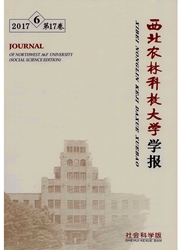

 中文摘要:
中文摘要:
作为旅游产业的全新发展模式,近年来,旅游产业融合在全球范围内不断拓展,其中,旅游产业与会展产业的融合是旅游产业融合的重要领域之一。在对旅游产业、会展产业的构成、旅游与会展产业价值链进行深入剖析的基础上,从3个方面论证了旅游与会展产业融合的可行性:旅游产业和会展产业共用大量的公共资源和产业资源,产业链彼此交织,旅游产业为会展产业发展提供了巨大的支持,会展产业的资源和影响力则是旅游产业深度发展的助推器。基于此,建构包括发展路径和发展对策在内的旅游与会展产业融合发展机制:在发展路径上,包括支撑层面的资本融合、技术融合与人才融合,基础层面的资源融合、功能融合与市场融合,以及最高层次的品牌融合与文化融合;最后,与产业融合路径相对应,提出旅游产业与会展产业融合的4项重要对策,包括培养专业人才、改进政府管理、发展骨干企业与整合产业价值链,以期对学术研究和产业实践提供参考。
 英文摘要:
英文摘要:
As a new development model for the tourism industry,in recent years the tourism industrial merging continuously expands worldwide. The industrial merging of tourism industry and MICE industry As a new develop- ment model for tourism industry, tourism industrial merging continuously expands worldwide in recent years. The merging of tourism and MICE is one of the important areas in tourism industrial merging. On the basis of analyzing deeply the composition of tourism industry and MICE industry, the industry value chain of tourism industry and MICE industry, the paper demonstrates the feasibility of the industrial merging of tourism industry and MICE in- dustry from three aspects, tourism industry and MICE industry share a lot of public resources and industrial re- sources, and their industrial chains interweave with each other deeply. Tourism industry provides great support for the development of MICE industry. The resources and influence of MICE industry is the booster of the depth de- velopment of tourism industry. On this basis, it constructs the development mechanism of industrial merging of tourism and MICE including development paths and strategies. In terms of development paths, capital merging, technology merging and talent merging are at the support level, resources merging, function merging, and market merging belong to the primary level, while brand merging and culture merging are at advanced level. Finally, the paper puts forward four important countermeasures for the industrial merging of tourism and MICE such as train- ing professionals, improving government management, developing large enterprises, and integrating industry value chains correspondingly in order to provide a reference for academic research and industry practice.
 同期刊论文项目
同期刊论文项目
 同项目期刊论文
同项目期刊论文
 期刊信息
期刊信息
